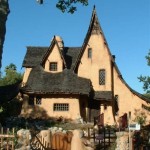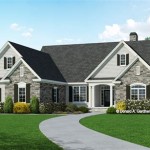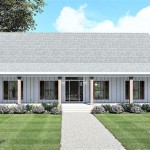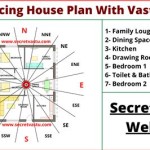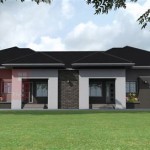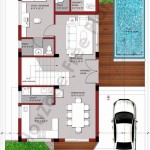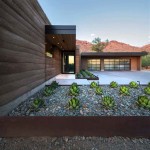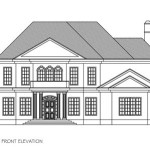Early 1900s Home Plans: A Journey Through Architectural Styles
The early 1900s witnessed a fascinating evolution in American residential architecture. This era, spanning from 1900 to 1929, showcased a diverse range of styles, each reflecting societal shifts and technological advancements. Examining these early 1900s home plans provides valuable insights into the history and craftsmanship of the period.
Key Architectural Styles of the Early 1900s
Several distinct architectural styles defined the early 20th century. Understanding these styles helps categorize and appreciate the nuances of period homes.
*Victorian:
Though its peak popularity was in the late 1800s, Victorian influences extended into the early 1900s. These homes often feature ornate detailing, bay windows, and asymmetrical facades. *Arts & Crafts:
Emphasizing handcrafted details and natural materials, Arts & Crafts homes showcase simplicity and functionality. Common features include exposed beams, low-pitched roofs, and built-in furniture. *Colonial Revival:
This style drew inspiration from colonial-era architecture, featuring symmetrical designs, large porches, and multi-paned windows. Subtypes, such as Georgian and Dutch Colonial, offered further variations on the theme. *Foursquare:
Practical and economical, the Foursquare design maximized space with its square footprint and boxy shape. These homes typically feature four main rooms on each floor. *Bungalow:
Emerging as a popular choice for smaller families, bungalows offer single-story living with low-pitched roofs, wide porches, and open floor plans. Craftsman bungalows, incorporating Arts & Crafts elements, represent a significant subtype.Characteristics of Early 1900s Floor Plans
Early 1900s floor plans reveal much about the lifestyle and priorities of the era. Certain characteristics distinguish these homes from later designs.
*Defined Rooms:
Unlike the open-concept layouts prevalent today, these homes featured distinct rooms serving specific purposes, such as formal dining rooms and parlors. *Front Porches:
Porches served as important social spaces, offering a place to relax and interact with neighbors. *Service Areas:
Many homes included designated areas for servants, reflecting the social hierarchy of the time. These spaces might include separate entrances and staircases. * Smaller Closets and Bathrooms:** Storage space and bathrooms were often smaller than contemporary standards.Popular Features in Early 1900s Homes
Certain architectural details frequently appear in early 1900s homes, adding to their character and charm.
*Built-in cabinetry:
Arts & Crafts and Bungalow styles often integrated built-in bookshelves, china cabinets, and other storage solutions. *Fireplaces:
Fireplaces served as central heating sources and focal points within living spaces. *Stained glass windows:
Intricate stained glass windows added decorative flair and a touch of artistry. *Woodwork:
Extensive use of woodwork, including elaborate moldings, trim, and staircase banisters, contributed to the craftsmanship of these homes.Adapting Early 1900s Plans for Modern Living
Many early 1900s homes are still standing today, offering opportunities for renovation and adaptation to modern lifestyles.
*Opening up floor plans:
Combining smaller rooms can create a more contemporary, open-concept feel while preserving the home's original character. *Updating kitchens and bathrooms:
Modernizing these spaces can significantly improve functionality and comfort. *Adding insulation and energy-efficient systems:
Enhancing energy efficiency can reduce utility costs and improve overall comfort.Finding Early 1900s House Plans
Individuals seeking to build a new home inspired by early 1900s architecture can find various resources for period-style house plans.
*Architectural archives:
Libraries and historical societies often hold collections of original blueprints and architectural drawings. *Online plan providers:
Numerous websites offer reproductions and adaptations of early 1900s house plans. *Custom design:
Working with an architect specializing in historical styles allows homeowners to create a custom design based on their preferences and the characteristics of a particular era.Considerations for Building with Early 1900s Plans
Building a new home based on early 1900s plans requires careful consideration of several factors.
*Local building codes:
Ensuring compliance with modern building codes is essential for safety and legality. *Material availability:
Sourcing materials consistent with the original construction methods can add to the authenticity of the project. *Budget:
Replicating the intricate details and craftsmanship of early 1900s homes can be costly.The Enduring Appeal of Early 1900s Architecture
The enduring popularity of early 1900s homes speaks to their timeless appeal. The craftsmanship, character, and architectural details continue to resonate with homeowners today. Studying these plans provides a deeper understanding of architectural history and offers inspiration for both renovation projects and new construction.

210 Vintage House Plans 1900s Ideas

Pin On House Exteriors Early 1900s

Old Vintage Bungalow House Plan Early 1900 S How To Build Plans Craftsman

30 Early 20th Century House Plans Ideas Vintage Floor

Newry Ie Early 20th Century House Plans From Museum S Reside Collection

1905 Late Folk Victorian House Plans Hodgson Rae Model

Radford 1903 Free Classic Queen Anne With Wraparound Porch Farmhouse Floor Plans Country Style House Vintage

People Used To Order Sears Home Kits From A Catalog In The Early 1900s And Some Are Still Standing Today

1905 Glen Flora Queen Anne Style Plan By Hodgson Victorian House Plans Vintage Floor

1905 Hodgson House Plans Early 20th Century Homes Old Houses For

